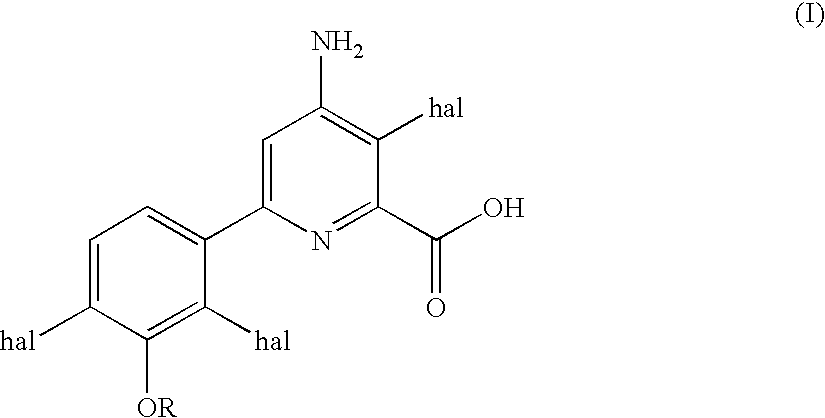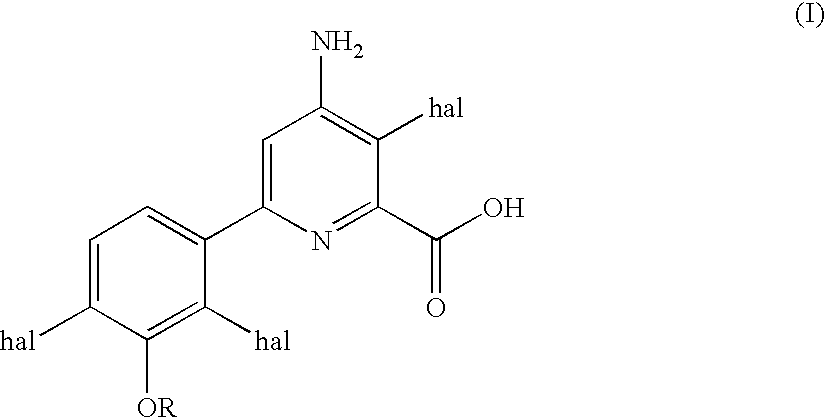Safening 6-(trisubstituted phenyl)-4-amino-2-pyridinecarboxylate herbicide injury on cereal crops
a technology of trisubstituted phenyl and herbicide injury, which is applied in the field of safening 6-(trisubstituted phenyl)-4-amino-2-pyridinecarboxylate herbicide injury on cereal crops, can solve the problems of cultivated plants being damaged to a certain degree, etc., and achieves the effect of reducing the herbicidal
- Summary
- Abstract
- Description
- Claims
- Application Information
AI Technical Summary
Benefits of technology
Problems solved by technology
Method used
Image
Examples
Embodiment Construction
[0018]The pyridinecarboxylates of formula I are a new class of compounds having herbicidal activity. A number of pyridinecarboxylate compounds are described in U.S. Pat. No. 7,314,849, including 4-amino-3-chloro-6-(4-chloro-2-fluoro-3-methoxyphenyl)pyridine-2-carboxylic acid (compound 1) and 4-amino-3-chloro-6-(2,4-dichloro-3-methoxyphenyl)-pyridine-2-carboxylic acid (compound 2). The pyridinecarboxylates of formula (I) control annual grass weeds and broadleaf weeds in wheat and barley but are also phytotoxic to wheat and barley at commercially herbicidal doses.
[0019]AD67 (MON 4660) is the common name for 4-(dichloroacetyl)-1-oxa-4-azaspiro[4,5]decane. Its safening activity is described in The Pesticide Manual, Thirteenth Edition, 2003. AD67 (MON 4660) is used as a safener in maize.
[0020]Benoxacor is the common name for (±)-4-(dichloroacetyl)-3,4-dihydro-3-methyl-2H-1,4-benzoxazine. Its safening activity is described in The Pesticide Manual, Fourteenth Edition, 2006. Benoxacor is us...
PUM
 Login to View More
Login to View More Abstract
Description
Claims
Application Information
 Login to View More
Login to View More - R&D
- Intellectual Property
- Life Sciences
- Materials
- Tech Scout
- Unparalleled Data Quality
- Higher Quality Content
- 60% Fewer Hallucinations
Browse by: Latest US Patents, China's latest patents, Technical Efficacy Thesaurus, Application Domain, Technology Topic, Popular Technical Reports.
© 2025 PatSnap. All rights reserved.Legal|Privacy policy|Modern Slavery Act Transparency Statement|Sitemap|About US| Contact US: help@patsnap.com



